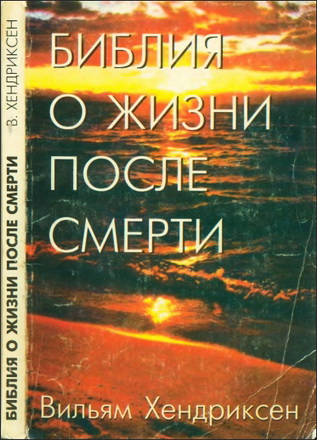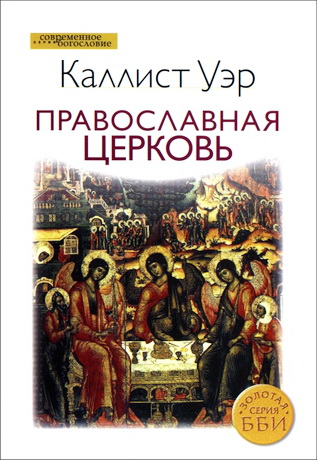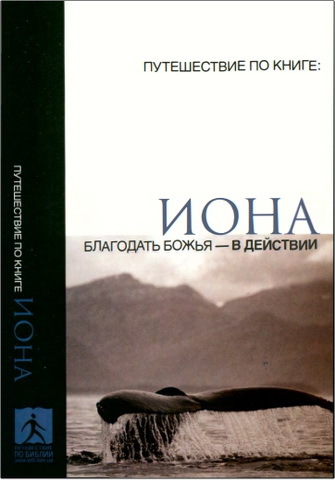
Clarke - Linzey - Dictionary of Ethics, Theology and Society
Paul Barry Clarke and Andrew Linzey - Dictionary of Ethics, Theology and Society
Abington: Routledge, 2006. – 964 p.
ISBN 0–415-06212–8
ISBN 978-1-1361-2100-5 (ePub)
The purpose of this Dictionary of Ethics, Theology and Society is an ambitious one: the mapping out of the major ethical, theological and political influences which have come to form Western society, and to demonstrate their continued relevance in a number of areas. These influences and their histories are not of course unrelated, although there are necessarily tensions between them. At times the entangling and conjunction of terms is more than apparent; at times their disjunction is obvious. This is not therefore another Dictionary of Ethics, or a Dictionary of Theology, or a Dictionary of Society. This Dictionary attempts a bolder, interdisciplinary survey: the detailing and illustration of aspects of what might be called the ‘Western mind’.
Whether there can be said to be any such thing as the ‘Western mind’ is of course contestable; indeed now more than perhaps ever it is being contested. It is frequently argued that society has no coherent ideology left, and that complete pluralism in faith and in practice is now inevitable. On some accounts secularization has progressed so far that it is now impossible to relate society and theology, and that we are in a postmodern, post-theological, post-ethical position from which there is no return and nowhere left to go. There is an epidemic of endism, predictably as the millennium approaches; we face the suggestion that we are at the end of history, the end of modernity, the end of politics. On such arguments the linking of the social, the theological and the ethical might seem a quixotic endeavour. Yet the arrogance of such a view – not dissimilar to the now-exploded idea that biological evolution has been a narrative destined to culminate in homo sapiens as it is today – fails to take into account some serious arguments, arguments which are explored and detailed between the covers of this book.
For such a view fails to appreciate that even – perhaps especially – in its pluralistic forms, Western society continues to be deeply indebted to the Judeo-Christian tradition and its synthesis with political and social thought. Furthermore, whatever the extent of secularization, and however dramatic the challenge of what has been called postmodernism (that useful catch-all term for the current intellectual predicament), the origins of a society determine the range of possibilities that follows; determine them not in an eschatological sense, nor in a mechanistically determinist sense, but in a foundational sense. Whatever the future holds, it will always contain the debts, traces and scars of all that precedes it.
There will, in such a process, be moments of crisis, of apparent breaches with tradition. It is not implausible to suggest that we live in an age experiencing just such fracturings and rifts. Yet a society does not, cannot by definition, abandon its foundations. It can however transform them; and at certain points these transformations will present themselves as revolutionary breaks. But breaks are always breaks from something; they are not, as Germany’s Stunde Null or Cambodia’s Year Zero perhaps show, a new beginning with the slate wiped clean; a social ethical and political tabula rasa . This Dictionary, then, does not merely attempt to historicize our current position, to read the obituary of a tradition; it demonstrates how deeply that tradition has been written into our society, how each apparent crisis or revolution is in some ways only a palimpsest on what precedes it, and how that tradition has written and re-written itself over such palimpsests as it has developed.
* * *
Prostitution
Prostitution derives from prostituere (Latin), to offer for public sale. An ancient text provides a still important clue to understanding the phenomenon of prostitution in societies very different from one another in time and place. As Proverbs 6: 26 has it, ‘a prostitute can be had for the price of a loaf’. In other words, the price for which someone (usually female) may be able to set for the sale of their Sexuality has much to do with their social and economic dependence on their clients, though it should be noted that the exchange of sex for money or gifts is not unique to prostitution, which marks one point on a continuum at the opposite end of which are legally sanctioned sexual unions.
In the world represented by the Biblical texts, prostitution became a metaphor for apostasy, presumably because of the analogy which may be drawn between multiple sexual partners and the religious infidelity expressed via the Worship of more than one god. In the ancient world, as now, prostitutes might enjoy a certain social position, as in the case of the hetaira of Athens, of whom Aspasia remains the most famous example because of her association with Pericles ( Pomeroy 1975 ).
Studies of medieval society have now begun to illuminate how prostitutes were viewed in that context, with the history of marginal social groups, of women and of sexuality prompting new interest (Otis 1985) . Prostitution is associated with towns (not just seaports) where there are communities of travellers as well as large groups of married and unmarried males, tolerance of male sexual activity and spare cash. Attitudes associated with the Christian church oscillated between tolerance for what was perceived as a social necessity, the institutionalization of brothels and policies of repression, most notably associated with the period of the Reformation. It is important to note that the term ‘prostitute’ or its equivalents, e.g. meretrix, might be applied to any woman whose sexual conduct fell outside currently prescribed norms. The latter varied from place to place and depended in part on one’s social position. Institutionalization in the management of brothels limited the likelihood of males being arrested for ‘adultery’, as well as offering some protection from Violence and extortion to prostitutes themselves. Some medieval debate about whether the church could accept almsgiving from prostitutes recognized that they and their clients were engaged in sexual Sin, but it was also clear that the women acted out of necessity (Rossiand 1988). Thus much charitable effort rightly went into trying to rescue women’s social and economic position, sometimes by accommodating them in convents, hospitals and orphanages from which with assistance they might emerge as marriageable.
Prostitution is not infrequently a transitional state, related to a woman’s economic survival or the survival of a household dependent on what she earns, and throughout the centuries the problem has remained that the ‘domestic’ training women were likely to receive when forcibly restricted to institutions for ‘moral reform’ was precisely of the kind not likely to render them able to earn their living without resort to prostitution unless they could be reattached to a household group ( Cohen 1992 ). In the Christian tradition, certain ex-prostitutes symbolized the possibility of repentance (Ward 1987), with Mary of Magdala as their patron – but significantly the patron of all, whether prostitutes or not, who were repentant (Haskins 1993) .
A new phase of effort for social control of prostitutes may be identified in the seventeenth and eighteenth centuries with the establishment of ‘Magdalen’ homes and asylums concerned with protection, assistance, correction and rehabilitation, but the nineteenth century saw a new focus of attention on prostitution (Weeks 1981) . William Acton’s Prostitution, Considered in its Moral, Social and Sanitary Aspects, in London and other Large Cities and Garrison Towns, with Proposals for the Control and Prevention of its Attendant Evils of 1858 (second edition, 1870), was clear about on the one hand the social relationship between money and position as necessary for Marriage and on the other the connection between Poverty and prostitution (Marcus 1969) . Comparable points were made by Friedrich Engels’ The Origin of the Family, Private Property and the State of 1884 (Millett 1971) . The nineteenth century was an era of attempted police control and registration of prostitution in Europe, which in some countries survives in the twentieth century. In Britain this control was associated with the fate of the Contagious Diseases Acts of 1864, repealed in 1886 (McHugh 1980) . The campaign for repeal provided some much-needed political experience for women, some of whom were motivated by religious conviction in their determination to dislodge police control of individuals, particularly working-class women ( see Policing); they also raised serious questions about ineffective medical involvement in attempting to regulate public health by compulsion, and challenged the way in which the law was underpinning a double standard of sexual morality (Walkowitz 1980) .
One major result of the attempt to control prostitution has been to increase the dependence of prostitutes on males acting as pimps/protectors, on groups of organized criminals and on the owners of bars, clubs, massage parlours, etc. Notwithstanding the 1949 United Nations General Assembly Convention for the Suppression of Traffic in Persons and the Exploitation of the Prostitution of Others, prostitution flourishes worldwide and continues to provide material for post-1980s studies of, for instance, Thailand, colonial Nairobi, Buenos Aires and Ethiopia to name but a few places; the literature exhibits new features, most notably attention to the Power, gender, race and Class issues involved (Pateman 1988) . Child prostitution is clearly identifiable as an important issue in discussion of the future of the world’s children (Ennew 1986) .
Societies may wish to subscribe to the view that it is pointless to impose penal sanctions for certain forms of sexual relationship conducted in private by responsible and consenting adults, because these sanctions are likely to be inequitable in their application and ineffective as deterrents and to give too much scope to various forms of corruption. This position leaves the question of child prostitution still to be addressed, and fails to attend to the economic, social and gender issues involved.
- Anchor Bible Dictionary (1988) New York: Doubleday.
- Cohen, S. (1992) The Evolution of Women’s Asylums Since 1500, New York and Oxford: Oxford University Press.
- Ennew, J. (1986) The Sexual Exploitation of Children, Cambridge: Polity.
- Haskins, S. (1993) Mary Magdalen: Myth and Metaphor, London: HarperCollins.
- McHugh, P. (1980) Prostitution and Victorian Social Reform, London: Croom Helm.
- Marcus, S. (1969) The Other Victorians, London: Corgi.
- Millett, K. (1971) Sexual Politics, London: Virago.
- Otis, L.L. (1985) Prostitution in Medieval Society, Chicago, IL and London: University of Chicago Press.
- Pateman, C. (1988) The Sexual Contract, Stanford, CA: Stanford University Press.
- Pomeroy, S.B. (1975) Goddesses, Whores, Wives and Slaves, New York: Schocken Books.
- Rossiaud, J. (1988) Medieval Prostitution, Oxford: Blackwell.
- Walkowitz, J. (1980) Prostitution and Victorian Society, Cambridge: Cambridge University Press.
- Ward, B. (1987) Harlots of the Desert, Oxford: Mowbray.
- Weeks, J. (1981) Sex, Politics and Society, London: Longman.
Ann Loades





Комментарии
Пока нет комментариев. Будьте первым!